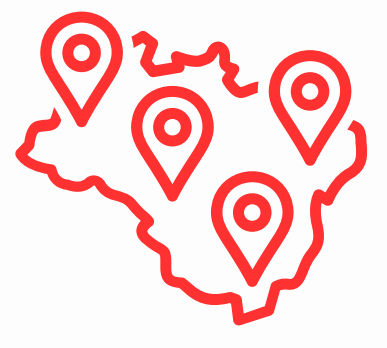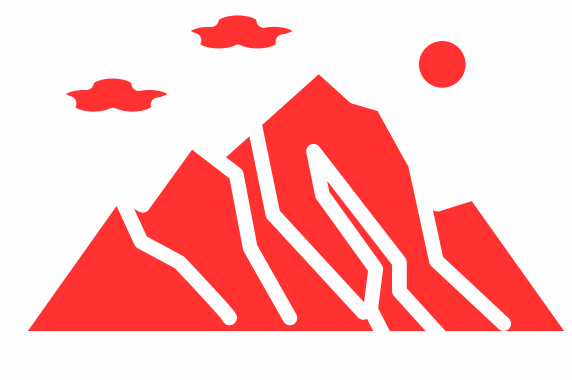Dayara Bugyal Trek
book your tour via whatsapp

Region
Himanchal Pradesh

Duration
5 Days

Altitude
14,000 Ft.

Base Camp
Manali

Best Time to Visit
June To Sep
- Overview
- About Trek
- Trek Highlight
- Brief Itinerary
- Detailed Itinerary
- How To Reach
- Cost Term
- Cancellation Policy
- Trek Essentials
- Fitness
- Risk and Response
- Secure Travels Guideline
About Dayara Bugyal Trek
Region: Uttarakhand
Trek Duration: 06 Days
Trek Difficulty: Easy
Max Altitude: 12,300 Ft.
Approx Trekking Km: 20 Kms.
Dayara Bugyal (12,000 Ft. Altitude 15 Km. Distance)
Nestled in the heart of Uttarakhand, Dayara Bugyal stands as one of the most cherished alpine meadows in the region. This picturesque landscape, adorned with lush greenery and captivating scenery, radiates positivity and excitement. Surrounded by majestic snow-covered mountains, the Bugyal unfolds its beauty in the Uttarkashi district, boasting an altitude ranging from 10,000 to 12,500 ft. Spanning over 28 sq km, Dayara Bugyal proves to be an ideal trekking destination, transforming into a skiing haven during winters.
As you traverse this enchanting terrain, you’ll encounter shepherd huts, dense forests, and mesmerizing views that elevate the trekking experience. Dayara Bugyal offers panoramic vistas of Mt. Banderpoonch and Black Peak, their majestic presence emerging from the meadows. If you crave wonder and wish to broaden your horizons, the Dayara Bugyal Trek beckons, promising to turn your dreams into reality.
At Trip on the Himalayas, our commitment is to ensure customer satisfaction by offering the best trekking options, and the Dayara Bugyal Trek package stands as a testament to this commitment. For those seeking an adventure in the winter wonderland, we also provide the Dayara Bugyal Winter trek, a unique opportunity to explore and experience the beauty of this destination.
Explore the detailed itinerary for comprehensive information on the Dayara Bugyal Trek and embark on a journey that promises to weave unforgettable memories amidst the breathtaking landscapes.
Dayara Bugyal is considered perhaps the most dynamite glade in Indium. The expression “Bugyal” in the nearby tongue implies high-height field land. Dayara Bugyal is viewed as one of the most lovely and stunning trips in Uttarakhand, as a result of the good country glades. As far as trouble level, Dayara Bugyal is a simple trip, and that implies it is ideally suited for novices.
Situated in District Uttarkashi of Uttrakhand, Dayara Bugyal remains at a height of over 10,000 ft/3048 m. This journey in the Garhwal Himalayas has become one of the most well known traveling courses, with thick woods that open to a tremendously lavish green glade.
The journey for Dayara Bugyal begins in the town of Barsu. Travelers can appreciate excellent perspectives on a stream streaming where they might actually stop and catch a pleasant sight. Pushing forward, the traveling trail to Dayara Bugyal further takes you to the lavish backwoods of maple and oak trees. One won’t observe any creatures there aside from a giddy mountain canine, which could go with you all through the trip. There are incredible camp open doors along Barnala Tal. As you rise more, the timberland begins to get out, and all you are left with is a wide, rambling, undulating, and lavish glade of Dayara Bugyal.
- Full of nature, with dense forests and open meadows.
- You can walk throughout the Dayara Bugyal aimlessly.
- Barnala Tal Lake makes you refresh just with its vibes.
- Journey across the oak and pine backwoods to experience wild creatures.
- Watch the superb sight of snow-covered tops like Bandarpooch (6,316 m), Bhagirathi (6921 m), and Black Peak (2,734 m)
The glades are rich in summer
Come April, the snow begins dissolving away from the glades of Dayara, clearing a path for new, delicate grass. Traveling across the green glades as the sun sparkles is probably the best experience you’ll have while journeying.
Blossom-decked knolls
This richness endures all through April and May. Towards the finish of May, the glades are loaded up with blossoms. This flowerbed is a delight to travel in as far as possible till the finish of June.
Thick, rich woods
Most trips navigating through this elevation in Uttarakhand brag of incredible timberland trails. Yet, the woodland that you stroll through here sticks out.
Mind-blowing mountain sees
A great many people partner Dayara Bugyal with Bandarpoonch. In any case, that is only one of the huge mountains that you see on this journey. Truth be told, as you show up at Raithal, the headquarters, you see John Lee and Draupadi ka Danda hanging the orange beams of the sunset.
Day 1: Dehradun to Natin Village
- Altitude: Natin Village – 2,250 m/ 7,400 ft
- Distance: 180 km | Duration: 7 hrs
- Market at Uttarkashi, another small market in Bhatwari
- Network is available
- View of Gangotri Range from Moryana Top
- Front view of Shrikanth peak and massif view of Gangotri from Natin
- Pickup time: 6:00 am at the parking of Dehradun Railway Station
- Stay in guesthouse
- Route: Dehradun – Suwakholi – Moryana Top – Uttarkashi – Bhatwari – Raithal – Natin Village
Day 2: Natin to Gui
- Altitude (Gui): 2,900 m/9,500 ft
- Trek Distance: 3.5 km | Duration: 4 to 5 hrs
- Altitude Gain: 650 m/2,100 ft
- Easy trail. Gradual easy ascend
- Hot lunch at the campsite.
- A well-marked trail to the campsite
- No water sources, carry 2 liters of water
- The same view as Natin, village huts around, campsite surrounded by forests.
- Golden Oak trees bloomed with Rhododendron.
- Stay on meadows in tents (2 people in one tent)
Day 3: Gui to Chilapada
- Altitude (Chilpada): 3,000 m/9,800 ft
- Trek Distance: 3 km | Duration: 2 hrs
- Altitude Gain: 100 m/ 300 ft
- Easy trail, gradual walk, easiest day of the trek
- Hot lunch at the campsite
- One liter of water is enough
- Stay in tents
Day 4: Chilpada To Dayara Top And Trek To Nayata
- Altitude (Dayara Top): 3,700 m/ 12,100 ft (Nayata): 2,800 m/ 9,200 ft
- Trek Distance: Chilpada-Dayara Top: 5 km | Duration: 5-6 hr Dayara Top – Nayta: 6 km
- Duration: 3-4 hr
- Easy to moderate trail
- Packed lunch on the way
- Carry enough water, only one water source near the top
- Massive views of many peaks and Dodital Range from top
Day 5: Nayata to Natin Village
- Altitude (Natoin Village): 2,250 m/7,400 ft
- Distance: 5 km | Duration: 3 hrs
- Altitude loss: 550 m/1,800 ft
- Easy descend all the way
- Hot lunch at Natin
- Stay in guesthouse
Day 6: Natin to Dehradun
- Drive Distance: 180 km | Duration: 6-7 hrs drive to Dehradun
- Leave Natin by 6:30 am
- Breakfast and lunch excluded.
- You will be dropped at Dehradun Station in a Tata Sumo/ Tempo Traveler or a similar vehicle.
- You will reach Dehradun between 3-4 pm. You can book your travel any time after 6 pm.
- Note: Distance, altitude, and trekking hours are approximate and rounded off.
Day 1: Dehradun to Natin Village
We will take you up from the Dehradun Railway Station parking lot at 6:00 a.m. for a 7-hour trip to Natin. Natin is a charming village that serves as the starting point for the Dayara Bugyal hike. Uttarkashi is about 38 kilometres away. The town is surrounded by lush nature. The Bhagirathi River runs beside you all the way to the settlement. The road to Raithal is a winding journey across the mountains. The route’s largest town is Uttarkashi, from which you’ll go to Bhatwari. The closer you go to the base camp, the more spectacular the vistas of the Alps get.
From the Moryana summit, you’ll receive your first look at the Gangotri range, including Shrikanth peak. If you want to photograph the magnificent peaks, you’ll take a short rest here.
The views of mountain peaks get better as you move closer to Natin; Shrikanth Peak is one of the most noticeable summits from here. There is a mobile network here. Uttarkashi has the last major market, as well as a minor market in Bhatwari. You’ll either stay in a guest house or experience a village homestay. You will have a quick introduction and briefing with the trip leaders and guides in the evening, and you will be given a schedule of the future trekking days as well as other pertinent information. Dinner and stay in the lodge.
Day 2: Natin to Gui
To begin the actual walk, get up early in the morning with an enthusiastic spirit. The trail takes you on a jungle hike. All around, you will see silver and gold oak trees. The path to the campsite is clearly defined, and the campsite at Gui is always visible. The track is easy to follow and progressively ascends. The next resting spot will take about 4–5 hours to reach. Because there are no water sources along the trip, bring 2 litres of water with you. As you climb higher in altitude on your way to Gui, the mountain views become more evident. The trail generally passes through forested regions that get denser as you get closer to Gui. It’s largely maple and oak trees, with a few other species thrown in for good measure.
Unlike mountains, the campsite is surrounded by alpine trees. Near the campsite, you’ll see charming village huts. Locals use the community houses to shelter their cattle during the summer months. A forest cabin in the shape of an igloo can also be seen from afar. A little lake called ‘Barnala Tal’ is also nearby. Gui offers nearly identical views to Raithal, with clear views of the Gangotri range and Shrikanth peak. To assist your body in acclimating to the higher altitudes, take short acclimatisation walks around the campsite. You can unwind and reenergize yourself while gazing at the lovely night sky.
Day 3: Gui to Chilapada
In comparison, this is a better day. As the woodland clears, the trail gradually ascends to the next Chilpada camping site. It’ll be a brief journey. The track continues onwards from Gui camping to Dayara. As you leave Gui campground, the concealed mountains on the other side become more visible. Next to the camping area is a flowing brook. For now, a single litre of water will suffice. On the path, there may be some snow trails. You’ll see 5 to 6 Chania cottages along the way, where shepherds keep their livestock during the summer months. Shrikanth peak, Gangotri I, II, and III are all visible from the Gui Thatch.
Shrikanth peak, as well as Gangotri I, II, and III summits, are visible from the Gui Thatch. The Jaonli peak and the top of Bandarpoonch are also visible. It’s a leisurely half-kilometer stroll from Gui Thatch, with plenty of opportunities to catch your breath. In this leisurely walk, take in the allure of a Himalayan woodland. As the woodland ends, you’ll have to continue rising steeply, crossing a couple of streams that may or may not be flowing depending on the season. At the campsite, a hot meal will be served. After crossing the stream for half an hour, you’ll arrive at the Chilpada campsite. The campsite is a little gap in the forest. The Dayara Bugyal walk includes a spectacular view of Bandarpoonch, but you will also see many other magnificent peaks. You can walk around and explore the area around the campsite after lunch or evening tea.
Day 4: Chilpada To Dayara Top And Trek To Nayata
The big day is here. You’ll hike all the way to the summit of Dayara today and then return to the campsite. It’s a trail that’s easy to regulate. Because there is just one water source at the top, bring enough water to last the entire journey. The trail eventually opens up as it passes through the forest, leading to huge fields. Following that, you’ll find yourself walking through colourful meadows. Chilpada is close to the Dayar Meadows, allowing you to spend almost an entire day exploring them. On your way towards the meadows, you’ll notice few Chania cottages on the outskirts. The Dyara Meadows are used as pasturelands in the summer.
The last ascent is strenuous, but it is well worth the effort since you will be rewarded with breathtaking views of the Dodital range. The track then leads to the Gidara pass, which separates the routes to Pichkiya and Gidara Bugyal. Rolling meadows spread for kilometres in every direction. Allow yourself some time to enjoy the tranquilly of the area before returning to the campsite. The meadow will be adorned with lines of violet and yellow wildflowers if you hike in the early season, late spring or summer. On the journey, there’ll be a packed lunch. We’ll go all the way down to the Nayata campground. The Maple and Rhododendron trees that surround the Nayata campground are magnificent. Spend the night at Nayata campsite.
Day 5: Nayata to Natin Village
Today is the last day of our adventure through Dayara Bugyal’s highlands. Get ready early in the morning to return to Natin. The journey from Nayata to Natin is 5 kilometres long and takes about 3 hours. Follow the main trail to Dayara that you came in on yesterday from the Nayata campsite; the trail is shaded by a deep forest canopy, so it will be a little cool here. Today is all about descending, and the descent is very straightforward. From afar, you can see Natin village and Raithal around an hour into the journey. Keep going until you reach the bottom. You can relive happy memories from the ascending days all along the trail.
The towering peaks seem to be beckoning you back. Children and villagers can be seen meandering through Natin, which is a vibrant community. You will be served a nice cooked lunch here. At Natin, we’ll spend the night in a guesthouse.
Day 6: Natin to Dehradun
In Natin, have one last cup of morning tea. Keep the goodbyes with your fellow trekkers in your heart. Get into the cab that will take you back to Dehradun at 6:30 a.m. after taking a wonderful group photo. This will be a 7-hour ride through the mountains, valleys, and along the Bhagirathi River, which served as a guide for you throughout the hike, and will bring your magnificent Dayara Bugyal journey to a close.
The day’s breakfast and lunch are not included. You’ll arrive in Dehradun between 3 and 4 p.m., and from there, you can continue on your way back as scheduled. It is preferable to schedule your next trip after 6 p.m., as this will allow for any unexpected road delays. Take plenty of adventure-filled memories home with you, as well as a promise to return to the mountains again and again. We wish you a safe and enjoyable journey to your final destination.
The closest town to join the journey is Dehradun, which is associated with all of India.
Via Air: Carefree Grant Airport is the air terminal serving Dehradun, situated around 25 km from the city. There is a day-to-day departure from Delhi to Dehradun.
Via Train: Take the short-term train to Dehradun from Delhi.
- Nandadevi Express – Train no: 12205 (Departure 11:50pm; Arrival – 5:40am)
- Dehradun Express – Train no: 12687 (Departure – 9:10pm; Arrival – 5:00am)
By Road: There is customary transport administration from Delhi for Dehradun from Delhi ISBT Kashmere Gate. Normally, transports drop you at Dehradun ISBT. From that point you need to come to Dehradun Railway Station.
Vehicles are accessible for get from Dehradun Railway Station at 6:30 am.
Inclusions:-
1. Accommodation (guest house, camping).
2. Meals while on trek (Veg. & Egg).
3. Trek equipment: sleeping bag, mattress, tent (triple sharing), kitchen & dining tent, toilet tent, utensils, and crampons (if required).
4. All necessary permits and entry fees.
5. First-aid medical kits and oxygen cylinder.
6. Mountaineering qualified & professional trek leaders, guides, cooks, and support staff.
7. Mules to carry the central luggage.
8. Secure travel staff insurance.
Exclusions :-
1. Food during the transit.
2. Insurance.
3. Any kind of personal expense.
4. Mules or porters to carry personal luggage.
5. Anything not specifically mentioned under the head.
6. Any kind of emergency evacuation charge.
Note :
Normally, Secure Travels expects you to carry your personal luggage on your own; if you wish to offload your backpack, you can give it to Mule.
Charges of offloading backpack:-Contact us
The backpack cannot weigh more than 11 kgs. The backpack should have waterproof cover. Suitcases, trolleys, and bags will not be allowed.
Paying the Trek/Tour Fee:
The fee can be paid by online transfer/Check deposit/Cash deposit/Demand draft. Instruction for payment will be forwarded along with your confirmation email. When your transfer is done, please e-mail us a confirmation mail with your transfer details, so that we can follow up your reservation efficiently.
On the occasion which you cancel your trek, that is the cancellation coverage we follow: –
Cancellation 30 days earlier than the beginning date of the trek
— Get your complete trek rate returned in our Trek Voucher OR get a financial refund with 15 % cancellation charges. – Cancellation within 30 days and 20 days earlier than the beginning date of the trek
— Get 80% of the trek rate in a Trek Voucher OR get a financial refund with 50% cancellation charges.
– Cancellation much less than 20 days earlier than the beginning date of the trek
— No financial refund
Trekking Gear
1. Ruck sack bag with rain cover. Qty -1
2. Day Pack Bag – Recommended for treks with summit day
3. Head Torch with spare Batteries. Qty -1
4. U V protection sunglasses. Qty -1
5. Water Bottles: 2 bottles of 1 liter each
Footwear
1. Non-skid, deep treaded, high-ankle trekking shoes Qty -1
2. Pair of light weight Slipper/Sandals Qty -1
Clothing
1. Quick Dry Warm lower or Track Pants. Qty – 2
2. Full sleeves T-shirts/ Sweatshirts. 1 for every 2 days of trekking
3. Pair of thick woolen socks. 1 pair for every two days of trekking
4. Thermal Body warmer Upper & Lower. Qty-1
5. Undergarments. Qty – 1 for every day of trekking
6. Warm jacket closed at wrist & neck .Qty-1
7. Full sleeves sweater. Qty -1
8. Rain wear ( Jacket & Pants ) . Qty-1
9. Pair of waterproof, warm gloves. Qty-1
10. Woolen cap. Qty-1
11. Sun shielding Hat. Qty -1
Toiletries
1. Personal toiletries kit (Small Towel, Toilet paper, paper soap, Bar soap, toothbrush, toothpaste, cold cream etc.)
2. Sun screen lotion small pack . Qty -1
3. Lip Balm small pack. Qty-1
Utensils
1. Small size, Light weight & Leak proof lunch box. Qty-1
2. Plate. Qty- 1
3. Spoon.Qty-1
4. Tea/Coffee (plastic) Mug.Qty-1
Miscellaneous
1. Camera (Optional)
2. Carry your medicines in plenty in case you have any specific ailment. Consult your doctor before joining the trek.
3. Dry fruits, Nuts, Chocolate bars (Optional)
Fitness For Trekking
Tips to get fit for Trekking
Experiencing trek is almost everyone’s passion or dream. But before starting or planning for a hike, you must be aware of the during and post-trek pain of your body. It is essential to be strong enough to enjoy your whole trek without any disruption of body ache. One book or decide several months before going on a hike, so you have a significant amount of time exercising your body and training it to become flexible for the trek.
Following are some advantages of training yourself before trek:
- It fosters aerobic fitness.
- It improves blood circulation and breathing functions as well.
- It makes the heart strong, preventing it from any problem.
- It helps in toning legs.
- Muscles get build-up which is very beneficial.
Therefore, one must do practice to gain all these benefits. It is not only for the trek but for lifetime fitness also.
Let’s have a look at some factors which must be kept in mind to practice before trek:
Importance of Stretching
It helps the body become flexible and allows you to move your body in any direction you want quickly. It helps make the joints such as shoulders, elbows, hips and knees stronger to prevent any mishappening. It provides much relaxation to your body and relieves the pain. And if you are going on a trek, it is essential to practice stretching way before your hike. It will help you in moving to the higher altitudes region more efficiently.
Sleep like baby
It is always said that one must sleep like a baby. It means sleep without any worries. This makes you have an adequate amount of sleep which is a significant factor in daily life. So, practice it daily and also before your trek. Try to make yourself comfortable to sleep at higher altitudes.
Good Shoes-Good Trek
It is so evident that one has to walk and only walk while Trekking, so it is far more essential to have a good pair of trekking/hiking shoes. Practice walking by wearing your boots before the trek to make yourself used to them. You may opt for an option to keep an extra pair in your bag while trek to help yourself in the opposite condition.
Altitude is a risk. Before you begin the trek, you should be aware of the effects of the high altitude on your body. Acute Mountain Sickness (AMS) symptoms include a moderate headache, nausea, and overall discomfort.
Response: If you have any of these symptoms, notify the trek leader immediately and follow his advice. To deal with the scenario, each campsite contains a stretcher, a fully prepared first aid kit, and oxygen cylinders.
Weather Risk: No one can guarantee snow, rain, or sunlight, even if we keep a constant eye on the weather. Please keep in mind that your safety is our primary priority, and if the weather isn’t cooperating, we won’t leave the campsite.
Response: The choice to go or wait for better weather will be made solely by the Trek Leaders and Guides.
Risk: Injury is a possibility. While trekking across difficult terrain, minor injuries such as calf sprains, bruising, and other minor ailments are prevalent. Serious injuries, such as fractures or significant cuts, are quite uncommon.
Response: All of our Trek Leaders are trained in wilderness first aid. They’ve been taught to deal with emergencies and have well-stocked first-aid equipment to deal with minor injuries. In the event of major injuries, the patient is carried to the nearest roadhead on a stretcher and taken to the nearest medical facility.
DO’S AND DON’TS ON A TREK
1. Alcohols or any other intoxicating products ‘’STRICTLY PROHIBITED’’
during the trek.
2. Always pay heed to the trek guides or instructors.
3. Try not to leave the group under any circumstances.
4. Avoid trekking during the night as it is extremely dangerous.
5. Avoid using earphones as that might hinder your hearing.
6. Do not participate in or encourage littering of the places in any form.
7. While visiting the local villages and tourist sites, obey the local guidelines
and instructions.
8. Do not harm or interrupt the local sentiments of the places.
IMPORTANT:
Your safety is of paramount concern while traveling with Secure Travels.
Please note that your leader has the authority to amend or cancel any part of
the itinerary if it is deemed necessary due to safety concerns. Since adventure
entails traveling in remote mountainous regions, we cannot guarantee that we
will not deviate from it. Weather conditions, the health condition of a group
member, unexpected natural disasters, etc., can all contribute to changes in
the itinerary. The leader will try to ensure that the trip runs according to plan,
but please be prepared to be flexible if required.
Finest time to go for Dayara Bugyal Trek is during May to July, August end to mid-October and December to February.
Dayara Bugyal Trek in comparison is easy to moderate difficulty with another high altitude journey.
On an average, we cover roughly 6-7kms between our camping stations.
Beyond our controllable reasons when the journey is extended, also fresh charges tend to be applied.
Lead companion person is certified & endured help. These attendants are locally sourced and have other platoon members including original attendants, cook, aides, and janitors.
Quick Enqiry
Pick Up Point: Uttarakhand
Payment Mode: Cash, UPI, Bank Transfer
Trek Info
- Region :- Uttarakhand
- Snow: December to March
- Trekking Km: 46 Kms
Need Help?
Call To Expert:
+91-8126089649
+91-9368802891
❤ GUIDES
Certified, Experienced, Soft Spoken and Well Mannered Local Trekking Guides
❤ EXPERTISE
We have been managing trekking events from last few years, which proves that we are experts of our field.
❤ 1000+ TOURS DONE
Till now we have done more than 1000 tours across India.
❤ POCKET FREINDLY PACKAGES
Our packages are very cost effective as compare to other travel agencies.
❤ VERIFIED REVIEWS
Our customers review us as one of the best trekking agency in Uttarakhand.
Weather Forecast
The weather during April, May and June is mostly cool and pleasant but gets chilly and cold during winters.

Have any Query?
Call Us on 9045089649
